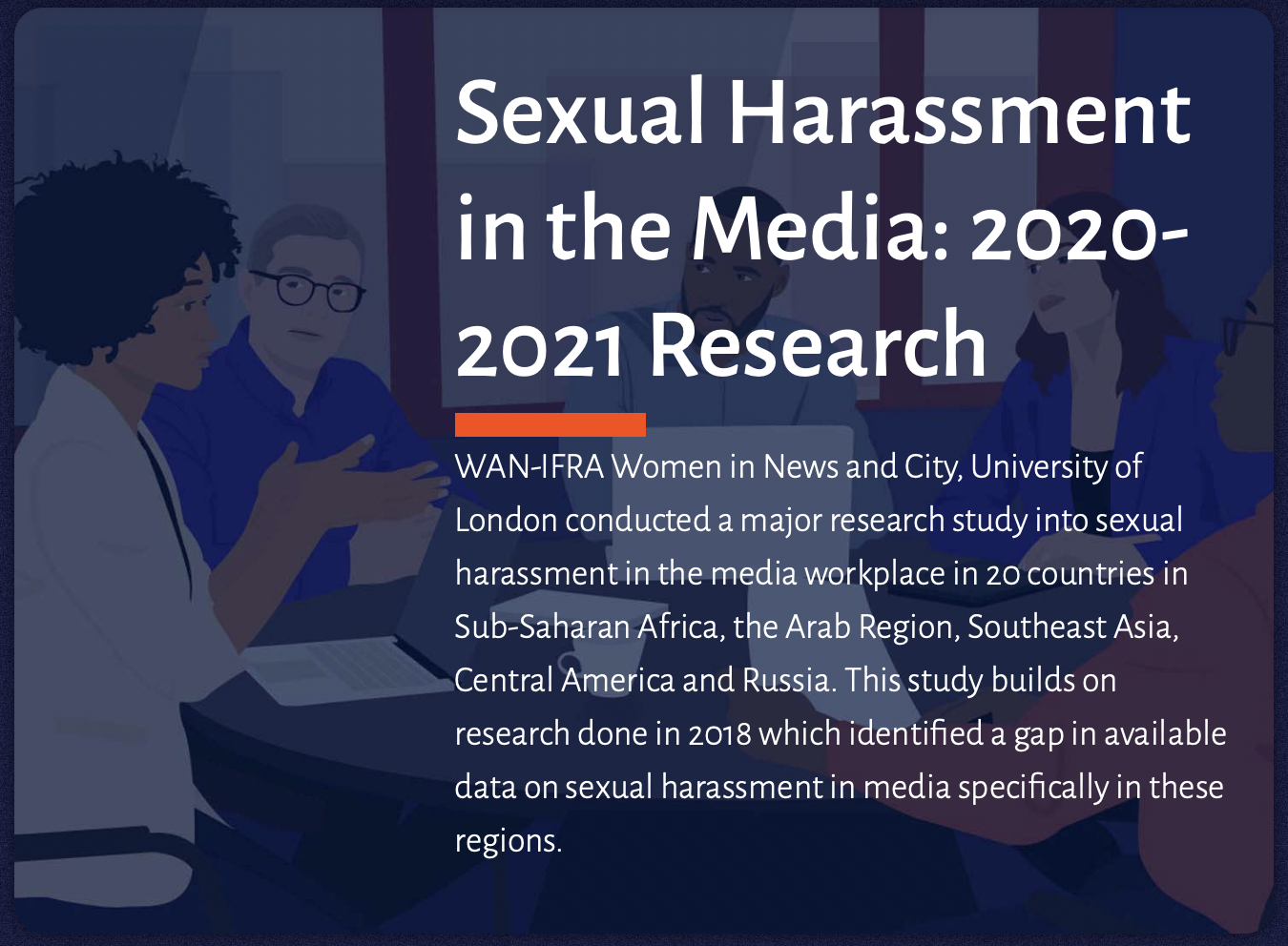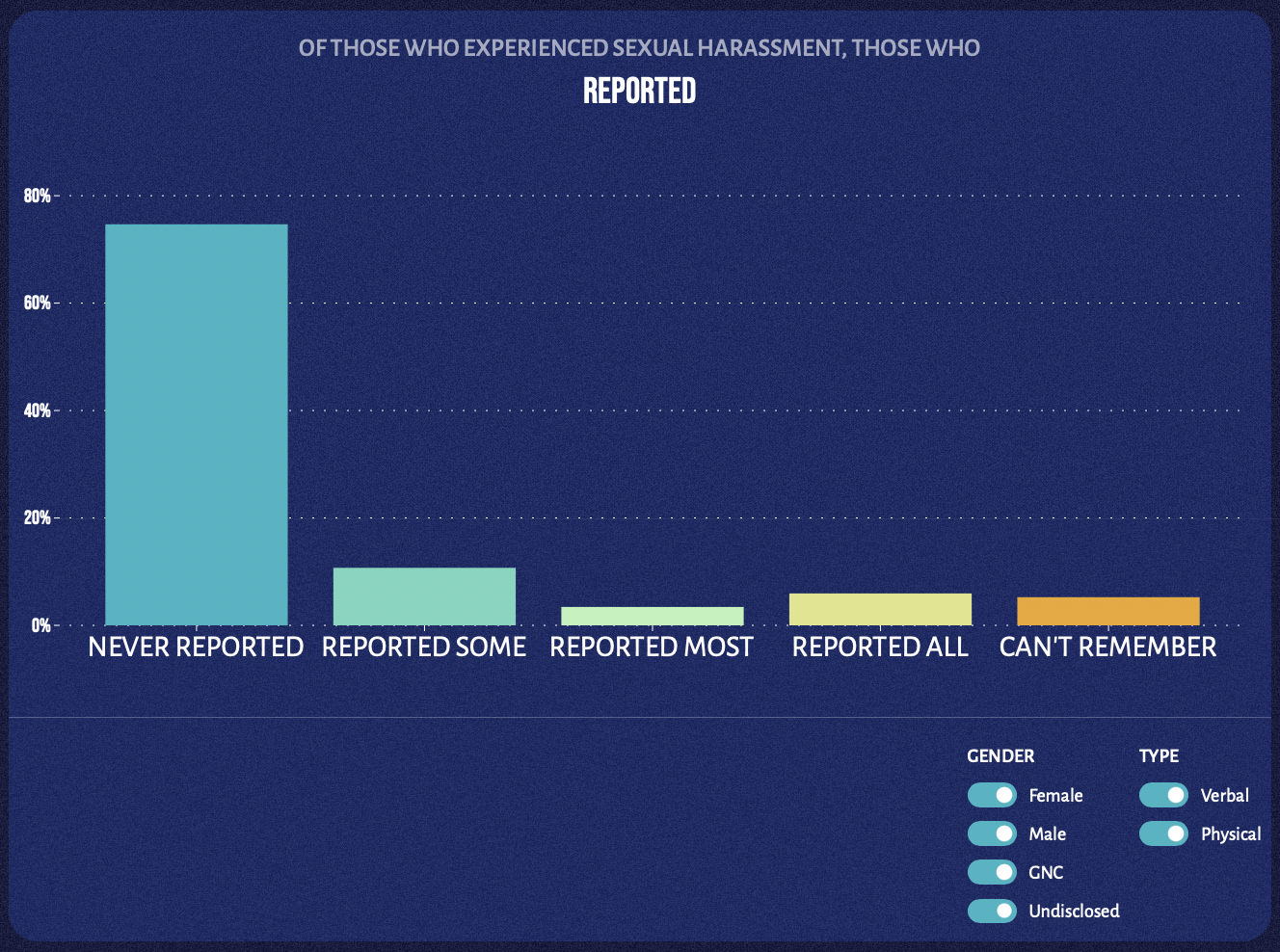41% of female newsroom professionals have experienced sexual harassment
A new global study analysing sexual harassment across the regions of Africa & Middle East, Southeast Asia, Eurasia and select countries in Central America shows that 41% of women media professionals have experienced some kind of sexual harassment in the workplace. The report, which focusses on newsroom environments, has been produced by WAN-IFRA Women in News in partnership with City, University of London.

Carried out between November 2020 and September 2021, the survey includes feedback from more than 2,000 individuals as well as interviews with 85 senior executives. In total, data from 20 countries was collected, and shows that women and gender non-conforming media professionals are almost three and a half times more likely to experience harassment than men.
However, although less prevalent, men have not been spared, with an average of 12% experiencing verbal and/or physical harassment. In total, 30% of all media professionals surveyed experienced verbal and/or physical harassment.
“Women and gender non-conforming people are disproportionately affected by sexual harassment in the media sector. While we have known this anecdotally, the findings from this research show that sexual harassment is an endemic problem in the industry – irrespective of geography,” says Melanie Walker, Executive Director, Women in News at WAN-IFRA.
“It is up to the industry to address this problem by being unequivocal in the stance against sexual harassment, and by having the policies and tools in place to manage incidents when they do occur in order to protect their staff, and create a safe environment for all”.
Weak reporting levels, and management response
Despite the fact that on average, 41% of women media professionals have experienced verbal and/or physical sexual harassment in the workplace, only 1 in 5 reported the incident. This is largely due to fear – fear of negative impact, fear of losing their job, fear of not being believed, and fear of retaliation.
In addition, on average, one in four respondents said they did not report their experience of harassment because their organisation lacked the mechanism to do so and/or they did not know how. Only 11% of respondents reported knowing whether their organisations even had a sexual harassment policy.
Of the few cases that are reported, action is taken by the organisation in only half of the cases and is most commonly limited to warning the perpetrator (41%). Research numbers also show that experiences of sexual harassment were overwhelmingly perpetrated by fellow employees (39%) or management (19% direct supervisor and 19% higher management).
85 executives, including 51 women, from media organisations in the five regions were interviewed as part of the qualitative research. 44% acknowledged that they themselves experienced sexual harassment – similar to the findings reported by women media professionals. Yet only 27% of these same executives believe that it is still an issue in the industry.
The research is now available online through a unique interactive site that allows users to break data down by region, country, gender, type of harassment as well as by management response. Additional data sets including type of media, seniority of the respondent, and 3rd party observation of harassment, will be added over the next few weeks. You can find the full study here.











